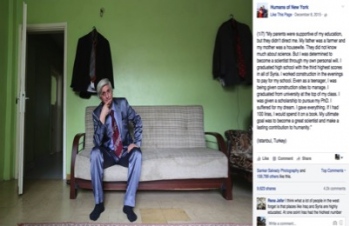|
| |
A Genre-based Approach to Writing: Non-Native English Teachers’ Perceptions about Social MediaCristina Sánchez-Martín In this article, I will illustrate the integration of social media in the course through a genre-based approach. Ultimately, I hope to demonstrate that it helped students to develop their knowledge of writing and writing pedagogies. Course Description The integrated reading and writing course was designed for students to practice their reading and writing skills in academic and non-academic contexts. Since students were NNESTs, the course also aimed to provide them with practical experience in writing pedagogies. The course was informed by a genre-based approach, which “is concerned with what learners do when they write” (Hyland, 2004, p. 5) because it is based on the premise that writing is social action used to respond to situations in recurrent, yet flexible, ways. In this line, Christine Tardy references Miller to define genres as “typified responses to repeated situational exigencies” (2009, p.6), but, at the same time, acknowledges that “variation and fluidity are also essential characteristics of genre that must be accounted for” (2015, p. 8). Therefore, this approach allows student writers from diverse backgrounds, including multilingual writers, to bring their prior knowledge of genres and build on it to face new writing situations. During the course, students were asked to analyze genre features and reproduce them in unique ways. The course was divided in two modules of four weeks each. The first module included genres for self-representation, a profile for the university web-based learning system, a narrative of a personal anecdote, an informal letter, and a post for a social media website (the latter will be further explained in the next section). As for the second module, it mostly included academic genres, like professional emails, lesson plans, and presentations. The class met every day for fifty minutes. The weekly schedule was organized in the same way every week with the purpose of helping students to develop a habit of genre research. On Mondays, we would engage in reading comprehension activities. The book chosen was The House on Mango Street. On Tuesdays, students would do a genre analysis of one of the genres mentioned above. Wednesdays were devoted to one specific aspect of the genre, namely, its language. Students would conduct linguistic research and language-based activities. On Thursdays, students would begin the production of the first drafts of the genres. Finally, on Fridays, students would do peer review and work on the production of their second drafts. A Social Media Genre: Humans of New York Facebook Post One of the genres chosen for the first module was a Humans of New York Facebook Post. Students were asked to read the home page of the Humans of New York Facebook site for background and contextual information as well as one post about Refaai Hamo, a Syrian refugee (Figure 1).  Figure 1: Humans of New York post on Refaai Hamo First, students analyzed some of the most relevant rhetorical aspects of the post related to the production (Who is the author? Where was the post written? What tools did the author of the post use to create it? What does he want to accomplish by writing the text?), the distribution (How was the post distributed –paper, via the Internet, etc.?) and the reception of the post (What are the responses to the post? What types of interactions does this post involve?). Next, they discussed the language and modes of communication (images, emoticons, words, gestures, etc.) employed both in the post itself and in the comments, reaching the conclusion that meaning was conveyed through a variety of modes and forms of language use (See appendix). For example, they noticed formal and informal registers and different languages (Arabic and English). Finally, they were asked to interview someone in class and write a post about her/him emulating the Humans of New York format and features. In order to do so, they brainstormed questions, edited them, conducted the interview, wrote the answers down and transformed them into a post that resembled the one analyzed. NNESTs’ Perspectives While my students had expressed their doubts regarding the use of social media as part of their own teaching practices in the questionnaires taken at the beginning of the course, their perspectives changed when they finalized the course. For example, Irene, one of the participants in the study, initially reported in the questionnaire at the beginning of the semester that writing had not been part of her teaching. However, in the final questionnaire, she stated that, among the genres tackled in our class, social media texts are the more meaningful to her teaching practices now “because the students will look at it as fun and will be interested in using it” (final questionnaire). In addition, her answers to the following questions provide further insights (the answers are cited verbatim): Questions: How was the experience of writing in digital media? Have you learned something that would you like to include as part of your teaching practices? Are there benefits or limitations when using them in the classroom? Please, explain your answer. Irene’s answer: Regarding digital writing, well, I have to admit I did not have a lot of experience. I just used it for the absolutely necessary. A new point of view emerged from studying it, now I think of it as useful and interesting and I do believe that I would use it as a part of my teaching practices. However, since in the classroom, there is no technology available for our students, it will be a problem. The students will have to use their own devices what will be a disadvantage for anyone without a digital device. It will require a lot of planning and preparation (final questionnaire). Finally, the following reflections from two of the participants in my study (Irene and Rose) illustrate that their understanding of writing had been transformed throughout the course: “The writing of a partner’s profile using as model the Humans of New York [was] interesting because I didn’t have Facebook and through this activity I realized it is an interesting tool to develop my students’ writing” (Rose, final questionnaire) “I have learned about social media which I am not fond of but it is necessary to know. I said necessary to know because our students are experts in this type of communication and use it on a daily basis” (Irene, portfolio letter). These reflections draw attention to several issues. First, employing social media in the English classroom can be a powerful tool to connect with students. However, it requires more preparation on the part of the teacher. Moreover, Irene points out that there is a lack of new technologies in the classrooms, while her students seem to have access to personal devices, which makes them “experts” on social media. Irene’s answers to the questionnaires and her reflection in the letter indicate that she felt unprepared and with little experience regarding the use of social media. Therefore, more teacher training is needed in this regard. Second, the reflections show that utilizing a genre-based approach to writing helps students to develop writing knowledge in multiple ways. One of the benefits of a genre-based approach to writing is that it raises students’ awareness of what constitutes writing. Traditionally, and in accordance with my participants’ responses in the initial questionnaires, writing was mostly understood in relation to sentence and paragraph construction. For example, Irene claimed in the initial questionnaire that writing (in a traditional sense) was not part of her teaching practices. However, her answers in the final questionnaire indicate that she “would use [social media writing] as a part of [her] teaching practices”. Although the study did not investigate the actual teaching practices of student teachers and the data collection process was conducted over a limited period of time (eight weeks), it sheds light on how student teachers’ knowledge of writing was transformed throughout the course, which would have direct implications in their own teaching. References Hyland, K. (2004). Genre and second language writing. University of Michigan Press. Humans of New York Facebook, Refaai Hamo 1/7. (2015) [Online Image]. Retrieved from https://www.facebook.com/humansofnewyork/photos Rafoth, B. (2015). Multilingual writers and writing centers. Utah State University Press. Tardy, C. M. (2009). Building genre knowledge. West Lafayette, IN: Parlor Press. Tardy, C. M. (2016). Beyond convention: Genre innovation in academic writing. Ann Arbor, MI: University of Michigan Press. Appendix Guiding questions for the analysis:
[1] In the past few years, the term “multilingual” has been proposed in the scholarship to refer to Second Language writing (Rafoth, 2015).
_______________ Cristina Sánchez-Martín is a Ph.D. student of English at Illinois State University focusing on Second Language/Multilingual Writing. | |
| ITBE Link - July 2016 |